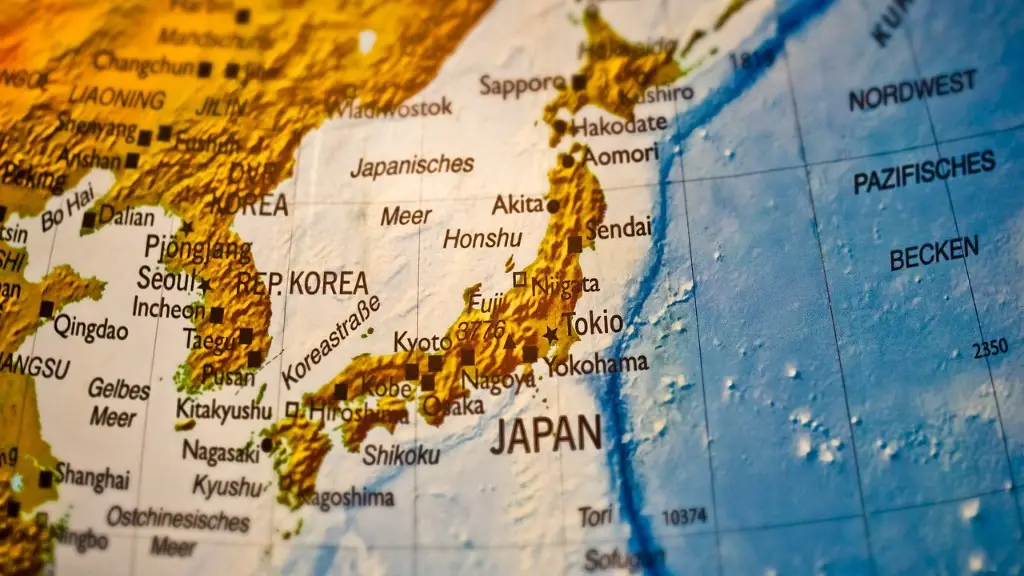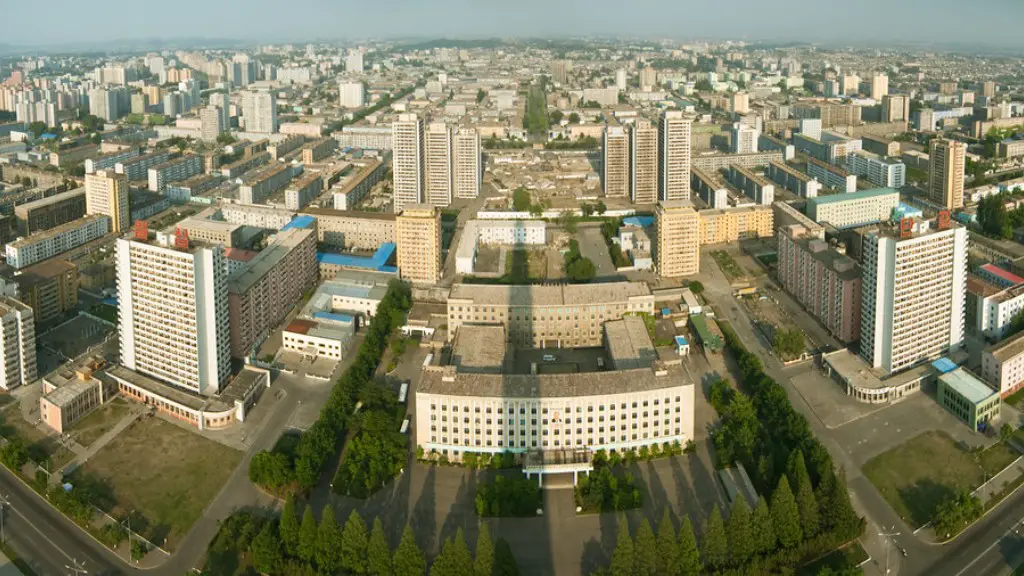Why Is South Korea and North Korea Divided?
The division of Korea, a once unified country, into two distinct states is one of the most significant geopolitical events of the 20th century. The carefully crafted border separating north and south stands today as a permanent reminder of the destruction caused by war and the suffering of generations of Koreans.
In 1945, at the conclusion of World War II, a hastily-drawn 38th parallel divided the defeated nation into two states. South Korea was assigned to the United States and North Korea was assigned to the newly established Soviet Union. With the sudden departure of the two occupying forces, North and South Korea were suddenly separated from each other.
The U.S. and the USSR then proceeded to install two distinct governments in their respective regions. South Korea’s pro-western government favoured democracy while North Korea’s communist government rejected it. The opposing ideologies of the separate countries are key factors in the division of Korea and remain a source of conflict to this day.
In 1950, North Korea invaded South Korea in an attempt to unify the country by force. The United States, supported by international forces, intervened in the conflict. The war was a stalemate and the peace treaty ending the conflict fully established the 38th parallel as a demarcation line between the two states.
The two countries have very different economic policies, which are a result, in part, of the starkly different political systems. North Korea has become an isolated, authoritarian state, with a largely non-market economy. South Korea, on the other hand, has had one of the most incredible economic transformations in world history, embracing market-based economic policies and global integration.
Though peace has persisted since the conclusion of the war, the two Koreas remain estranged and hostile to this day. The U.S.-led international presence on the Korean Peninsula continues to be vital in maintaining the peace and preventing any repeat of the tragedy that befell the generation of Koreans living when their country was torn apart.
Geopolitical Rivalry
In addition to the ideological differences between the two states, geopolitical rivalries between the U.S. and the Soviet Union have had a significant impact on the division of Korea. As the Cold War between the two superpowers progressed, they sought to gain influence in the region by proxy. This meant that Korea would be seen as a battleground between the two, with many problems such as a unified state being secondary to each of their interests.
The inability of the U.S. and the Soviet Union to compromise on a unified Korea has ensured that the two countries remain separated to this day. Moreover, North Korea’s increasing tensions with the international community, which began with the nuclear crisis of the 1990s, have only exacerbated this impasse.
As the two states have become more isolated, it has become more difficult for them to find agreement on a unified Korea. As such, successive Korean governments have chosen to keep the border closed and seek a peaceful resolution to their differences.
Recent events, such as the summit between North and South Korean leaders in 2018, have provided a glimmer of hope for a united Korea. However, despite this optimism, the situation remains uncertain and the future of the Korean Peninsula is far from certain.
Economic disparity
The economic disparities between North and South Korea are some of the most glaring in the world. South Korea is a thriving nation with a strong and vibrant economy, while North Korea is one of the poorest countries in the world.
The economic divergence began in the 1950s when South Korea embraced an open market economy, with foreign investment encouraged to spur economic development. North Korea, in contrast, pursued a state-led strategy of economic development, with limited investment from abroad.
The two economies have diverged significantly over the years, with South Korea becoming an export powerhouse, while North Korea relies heavily on aid from other countries. As a result, South Korea has a higher standard of living and more economic freedom than North Korea.
The economic disparities between North and South Korea have added to the tension between the two countries and led to further divisions. The South Korean government has long maintained a policy of economic cooperation with the North, while the North Korean government has generally rejected economic integration with the South.
The economic disparities between the two are likely to remain in the near future, as a unified Korea would require a massive economic restructuring. Thus, the divide remains very much in place.
Foreign relations
Foreign relations between North and South Korea have long been strained. North Korea has often sought isolation from the international community, while South Korea has sought to be open to the world.
North Korea’s stance on international relations is rooted in its fear of outside influences and its eagerness to maintain the status quo. South Korea has sought to foster better relations with other countries, including North Korea, and has been at the forefront of initiatives to promote inter-Korean dialogue.
The deterioration of international relations between North and South Korea has been exacerbated by the increasing nuclear ambitions of the North Korean government. While South Korea has actively sought to resolve the crisis through dialogue, the North Korean government has been largely dismissive and difficult to engage in meaningful negotiations.
The U.S. has also been instrumental in keeping peace between the two Koreas. They have maintained a presence on the Korean Peninsula since the Korean War and have sought to ensure peace on the peninsula for over 60 years.
The U.S. has also been key in facilitating negotiations between North and South Korea. They have sought to ensure that any resolution to the crisis is peaceful, with the safety and security of both states and the interests of the international community at the forefront.
General mistrust
The legacy of the Korean War and the mistrust it generated have had a profound effect on the relations between North and South Korea. North Koreans have long viewed South Koreans as an enemy, while South Koreans have seen North Koreans as a source of threat.
This mistrust has been exacerbated by the actions of the North Korean government, which has sought to portray itself as the sole legitimate representative of the Korean nation while rejecting South Korean attempts at reconciliation.
The mistrust between the two has become deeply entrenched, to the point where it can be felt in everyday life. Inter-Korean trade and travel remain severely restricted and the exchange of people and information prohibited.
In recent years, the mistrust between North and South Korea has begun to thaw. North Korean leader Kim Jong-un’s outreach to the South has been an important step in improving ties between the two countries.
However, the mistrust between North and South Korea still remains a major obstacle to a unified Korea. It will take a long time and difficult negotiations to bridge the divide and create a lasting peace.
Complicated history
Korea’s complicated history is one of the factors in the division between North and South Korea. In the 19th century, Korea was annexed by Japan and was governed as a Japanese colony.
When Japan was defeated in 1945, the Korean peninsula was divided along the 38th parallel by the U.S. and the Soviet Union. This created a new divide between the north and the south that has persisted to this day.
Korea’s long history of foreign domination and occupation has had a profound effect on the relations between North and South Korea. The legacy of this divided history has led to a mistrust between the two states that persists to this day, making it difficult to find a resolution to their differences.
The legacy of the Korean War has been another major factor in the division between North and South Korea, and has led to a deep-seated mistrust between the two countries.
The great tragedy of the Korean War was the immense suffering and destruction it caused for all Koreans. This suffering has been felt throughout the generations, and is a major factor in the division between North and South Korea.
Conclusion
The division between North and South Korea is complex and multi-faceted, and the lack of a unified Korea remains one of the most pressing issues of our time. Though the U.S. and the international community have maintained peace on the Korean Peninsula for over 60 years, the tension and mistrust between the two states is still palpable.
Political, economic and geopolitical rivalries, coupled with the legacy of a long and complicated history have all contributed to the current state of affairs. Attempts at reconciliation have been made in recent years, but the mistrust and divisions still remain.
The future of Korea remains uncertain, but with persistent diplomacy and dialogue we can hope for a peaceful resolution to the divisions that exist today.





